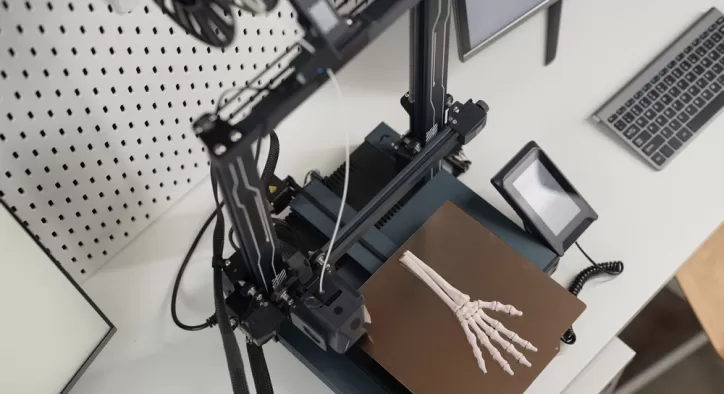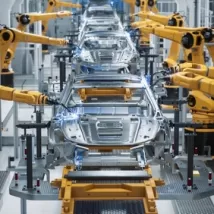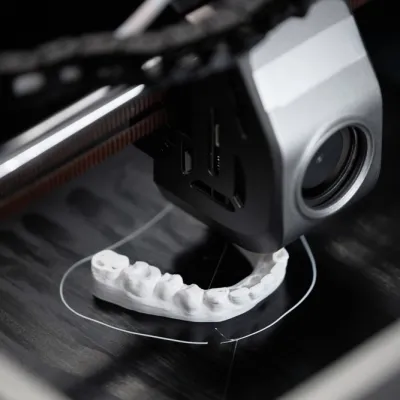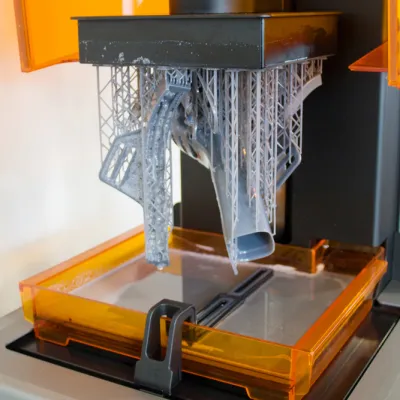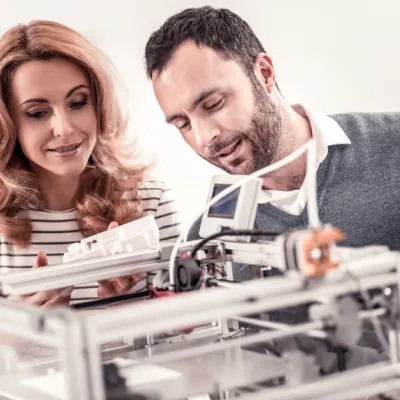- Konu Başlıkları
- Technology Stands Out in the Healthcare Sector!
- What is 3D Printing and How is it Used in Medicine?
- How is Printing Done with 3D Printers in Health and Medicine?
- 1. Personalized Medical Products and Prosthetics
- 2. Surgical Planning and Guidance
- 3. Rapid Production of Medical Prototypes
- 4. Biomedical Applications and Organ Replacements
- 5. Education and Simulation
- What are the Advantages of 3D Printing in the Health Sector?
- The Use of 3D Printers in Medicine is Becoming More Common Every Day…
Technology Stands Out in the Healthcare Sector!
In recent years, 3D printing technology in medicine and healthcare continues to revolutionize. The use of 3D printing in medicine and healthcare is not only limited to the production of medical devices, but also offers innovative solutions in many areas such as personalized treatment options, surgical applications, biotechnological products and educational materials. 3D printing in the healthcare sector makes the lives of both patients and healthcare professionals easier, while making medical processes more efficient and effective.
[widget-131]
What is 3D Printing and How is it Used in Medicine?
3D printing is the process of producing a three-dimensional object by adding material layer by layer to a digital model. This technology is used in a wide range of areas from the production of medical products to the production of prototypes. In the healthcare sector, 3D printing is revolutionizing areas such as surgical interventions, implant production, medical devices and personalized treatment solutions. 3D printing in the medical sector is generally used in the following areas:
Custom Prosthetics and Implants: When performing 3D printing in medicine and healthcare, prosthetics, implants and orthopedic devices that fully adapt to the bodies of patients can be produced thanks to 3D printers. While such devices are usually produced with generalized dimensions in traditional methods, 3D printing in medicine and healthcare offers personalized solutions.
Medical Prototypes: When designing new medical devices or products, it is important to quickly produce and test the first prototypes. In the healthcare sector, 3D printing in the healthcare sector allows prototypes to be produced quickly and at low cost. This allows for early detection of errors in the design.
Surgical Guidance and Planning: 3D printing in medicine and healthcare allows surgeons to better prepare for complex operations. The use of 3D printers in medicine enables the production of models that surgeons can fully see the patient's anatomy. This allows operations to be performed more efficiently and safely.
Biomedical Applications: In medicine and healthcare, organs and tissues that are compatible with the human body can be produced using biocompatible materials with 3D printing. Such applications provide significant innovation in organ transplantation and treatment processes.
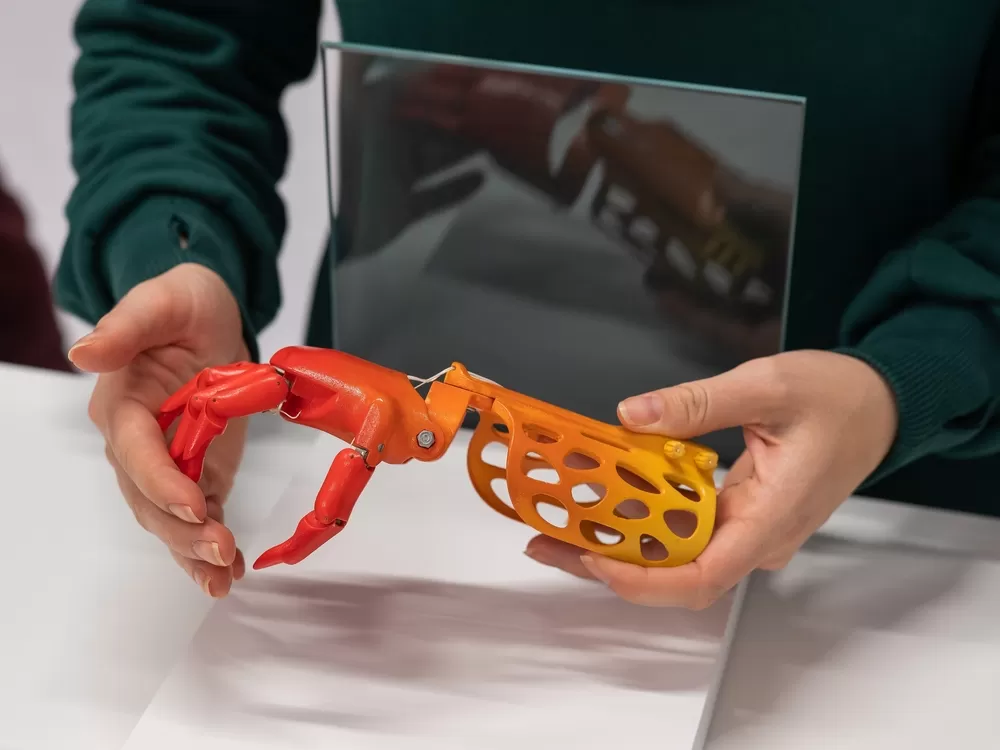
How is Printing Done with 3D Printers in Health and Medicine?
3D printing in the medical sector can be done with various techniques and materials. However, one of the most widely used methods is Fused Deposition Modeling (FDM), or the Fused Wire Method. In this method, 3D printers create objects by shaping molten plastic material layer by layer. To explain how 3D printing is used in the healthcare sector, you can review the following main headings.
1. Personalized Medical Products and Prosthetics
3D printing in medicine and health provides a great advantage in the production of personalized medical products. Prosthetics and implants made with traditional methods are usually produced in a certain size and in generalized designs. However, thanks to the use of 3D printers in medicine, prosthetics and implants that fully adapt to the body structure of each individual can be designed. This produces more effective results in terms of both aesthetics and functionality.
For example, when a leg prosthesis or dental implant is designed, a fully compatible model can be created by taking into account the patient's anatomical structure. This personalized design made for the health sector with a 3D printer increases the patient's quality of life and ensures that the prosthetics are used comfortably.
2. Surgical Planning and Guidance
Many surgical interventions require complex and delicate procedures. The 3D printing medical sector allows surgeons to make better preparations before the operation. In the medical sector, full-size models reflecting the patient's body structure or diseased organ can be printed with 3D printing. These models help surgeons visualize the operation in advance and create the best treatment plan for the patient.
For example, models showing the location and shape of the tumor in cancer patients allow surgeons to make more accurate incisions. Thus, the risk of making mistakes during the operation is reduced with the use of 3D printers in medicine, and the operation is performed faster and safer.

3. Rapid Production of Medical Prototypes
In the development of medical devices, it is of great importance that product prototypes can be produced quickly. In the healthcare sector, thanks to 3D printing, prototypes for medical devices can be produced quickly. In this way, the design process is shortened, costs are reduced, and new products can be introduced to the market faster. In addition, tests performed on prototypes allow the design to be optimized and developed.
4. Biomedical Applications and Organ Replacements
The use of 3D printers in medicine is not limited to medical devices alone; it is also creating a major revolution in the field of biotechnology. Organs and tissues can be produced using biocompatible materials that are compatible with the human body. 3D printing is a great source of hope for patients waiting for organ transplants in the healthcare sector and the medical world.
For example, medical organ production with 3D printers can be done with biological materials taken from patients' own cells. This minimizes the risk of rejection in the body and offers a safer treatment option for patients.
5. Education and Simulation
3D printing in medicine and healthcare also plays a big role in producing educational materials for medical students and healthcare professionals. Surgeons and students can get better education using 3D models of organs or body systems. In addition, surgeons can better analyze the situation they may encounter in real life by making simulations for complex operations.

What are the Advantages of 3D Printing in the Health Sector?
3D printing offers many advantages in the medical sector. These advantages provide great benefits for both healthcare professionals and patients. Here are some important advantages offered by this technology:
Personalized Solutions: The 3D printing medical sector offers products that can be customized according to the needs of each patient. This makes treatment processes personalized and provides more effective results.
Fast and Efficient Production: The use of 3D printers in medicine allows prototypes and final products to be produced faster. This allows for faster responses to patient needs.
Low Costs: Traditional production methods are generally expensive. However, thanks to 3D printing in medicine and health, the production costs of medical devices are significantly reduced.
Safer Operations: 3D printing in the healthcare sector applications in the health sector allow surgeons to be better prepared and reduce the risk of errors during surgery.
New Treatment Options: The 3D printing in the medical sector enables innovative treatment options such as biotechnology and organ replacements. This can facilitate difficult treatment processes such as organ transplantation.
[widget-136]
The Use of 3D Printers in Medicine is Becoming More Common Every Day…
3D printing in medicine and healthcare is a revolutionary technology that makes healthcare more efficient, faster and personalized. The use of 3D printers in medicine improves not only manufacturing processes, but also surgical practices, treatment options and educational processes. This innovative technology in the healthcare sector will be used in more areas in the future and will make medical solutions more accessible and effective. If you also want to benefit from medical product development with 3D printers and 3D printing medical sector applications in the healthcare sector, we are with you with our professional 3D printing services.

